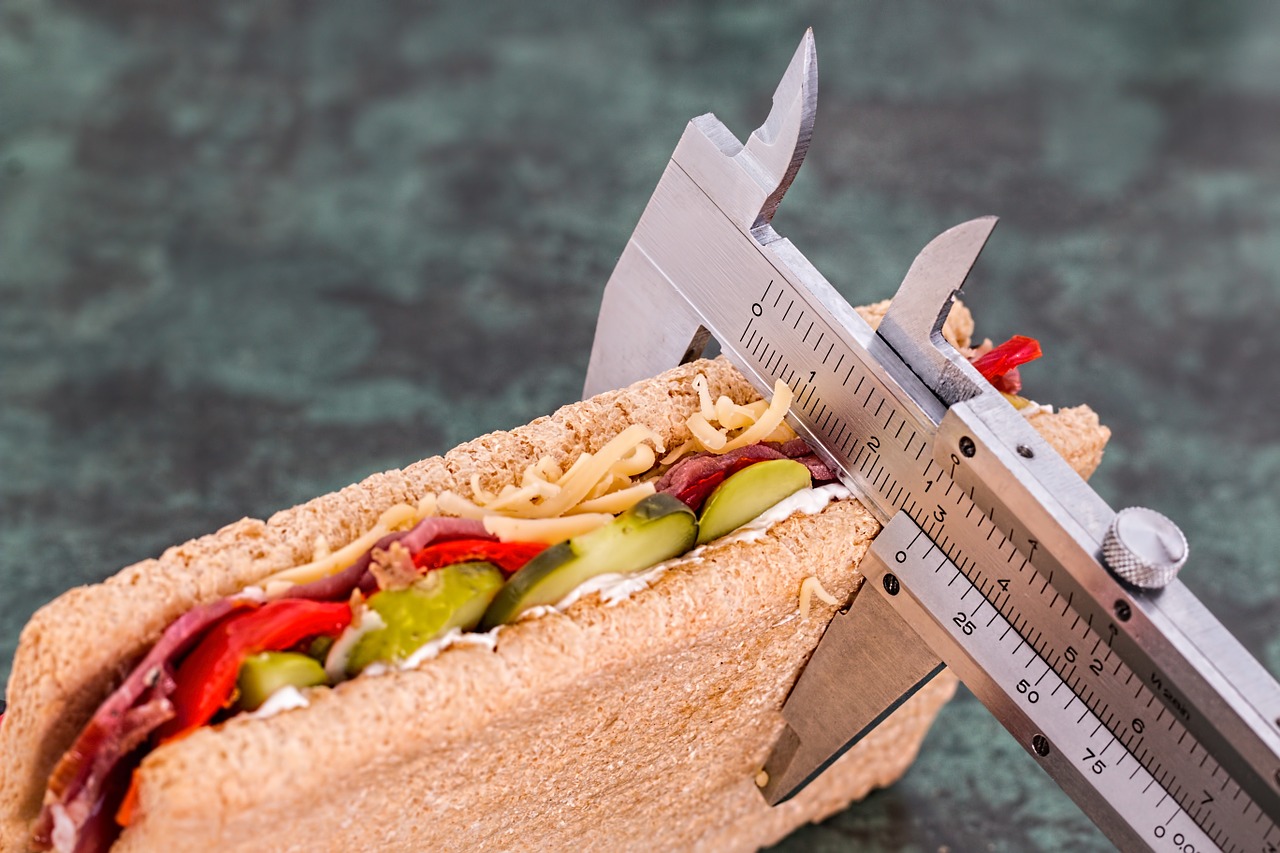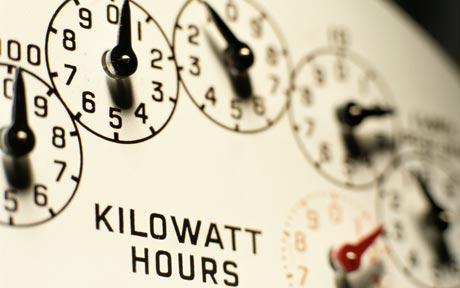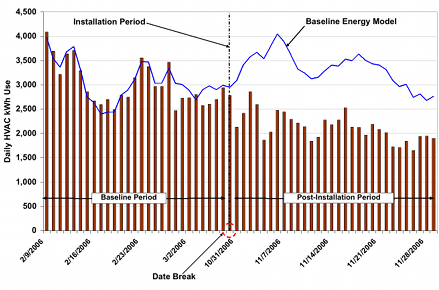Measurement and Verification Option B
Overview
In my earlier post M&V Overview I discussed that I would be creating posts centered around each of the M&V approaches. In this post I will be writing an in depth review of Option B Measurement and Verification (M&V). You can expect to learn the following from this post. The layout of this post is going to be very similar to the other M&V posts as it is my goal to give you an in-depth review of the four M&V methods to aid you in selecting the right approach.
- What is Option B M&V
- When is Option B M&V Applicable
- How do I establish a Baseline in Option B M&V
- How do I best conduct Option B M&V
- Examples of Option B M&V tracking Energy Conservation Measures (ECM's)
- Resources on creating a Option B M&V Framework.
What is Option B M&V
Option B is an M&V approach focused on a single retrofit or ECM action with all or multiple parameter measurements. There are allot of similarities between Option A and B and as such some of the data will look quite similar. An example of an Option B approach would be implementing a central plant retrofit. In a central plant retrofit you have many parameters and variables that are effected thus aligning the retrofit with an Option B M&V approach.
The accuracy of the Option B approach is much more accurate then the Option A approach due to the increase in the amount of parameters that are measured. However, because of this increase in measured parameters the Option B approach requires significantly more verification and cost. With Option B the M&V specialist will look at the parameters associated with the piece of equipment prior to and after the retrofit.
The difference will have an estimated reduction factor applied to it and this will be the "estimated savings". Gathering this data is much more intensive and requires an increase in data sampling to remain accurate. Finally, you will see that with Option B there is a significant increase in the frequency of measurement and occasionally Option B will require continuous monitoring.
When is Option B M&V Applicable
Option B is applicable when the following variables exist:
- Simple replacements that generate savings less than 20% of the total facility energy usage.
- The variables measured can be estimated using short-term methods.
- The variables being measured are simple and inexpensive to monitor.
- When operational data is present for the equipment.
- Sub-meters currently exist for the measured systems.
How do I establish a Baseline in Option B M&V
Unlike some of the more in-depth M&V methods Option B is highly dependent on measurements/monitoring and/or manufacturers data. The sources of information in order of reliability are listed below:
- Direct Measurements and/or Monitoring
- Manufactures data (design specifications)
- Manufactures performance data (e.g. fan curves)
- Industry accepted performance standards (e.g. ANSI/ASHRAE specifications for AHU performance)
- Weather data
- Observed building performance and occupant behaviors
- Maintenance and/or operations logs.
How do I best conduct Option B M&V
What follows is a summary from my article on Option A M&V as the two approaches are very similar. After the summary I have added some Option B specific information.
In order to effectively perform any M&V approach you must in the words of Stephen Covey "Begin with the end in mind". Therefore, it is vital that you must establish your expectations for your ECM/retrofit prior to performing the M&V approach. Some situations will simply be unrealistic.
Expecting a shift from T12 to T8 lighting to result in a 50% reduction of energy usage is simply not a realistic goal. In reality a best case estimate would be 35%. Knowing this prior to beginning your M&V approach will save you allot of headaches. Thus the first point is to "know the industry standards for energy retrofits).
Assuming you did your research and have selected a reasonable ECM/retrofit to implement there are a few key steps to properly executing your M&V plan.
- Select your key parameter if you did your homework on the expected savings then you should know what your key measurement is. That being said typically the key measurement is the variable most directly impacted by the retrofit.
- Measure the parameter in some cases this is not feasible and you will have to rely on other sources of data but whenever possible you should perform a preliminary measurement.
- Enact the retrofit once the retrofit is enacted you will begin to reevaluate the key parameter to ensure that the retrofit is having the desired effect. If the desired effect matches the expected results then that is great you simply need to continue to monitor your key parameter through the established M&V time frame. However, if the retrofit is not having the desired effect upon the key parameter then you must either adjust your retrofit, accept the lower savings, or abandon the retrofit.
In addition to the information above there is a need to identify the parameters being measured for the Option B approach and for the user to create a plan around the verification of the these parameters.
Examples of Option B M&V tracking Energy Conservation Measures (ECM's)
Good examples of ECM's and retrofits centered around Option B M&V are.
Complex Control Modifications
Central Plant Optimization
Renewable Energy Projects
Complex Airside Sequencing
Equipment Replacement
Resources on creating a Option B M&V Framework.
Rather than my typical sources section I am including a resources section in the body of the post because there are so many significant articles that go in-depth on the Option B Framework.
A Sample List of Energy Conservation Measures





